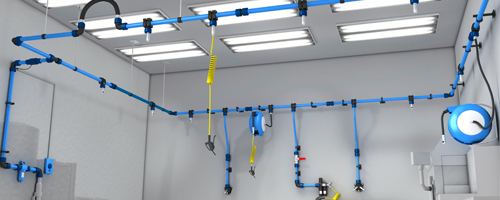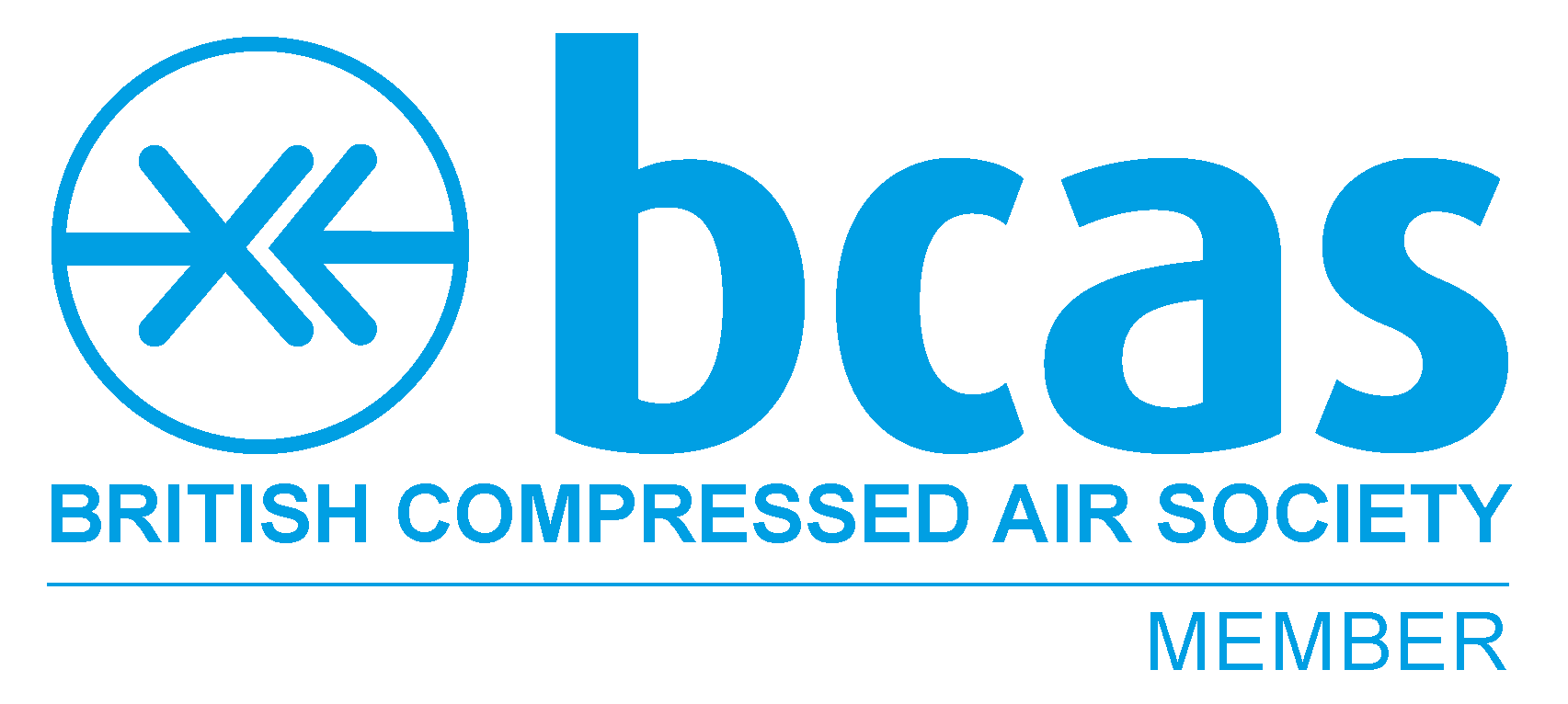home > Services > PSSR - Written Schemes of Examination
Get in touch
Never submit passwords or credit card information through this form. This site is protected by reCAPTCHA and the Google Privacy Policy and Terms of Service apply.
PSSR 2000 - Written Scheme of Examination
Ensure Safe Operation of Your Air Compressor with a PSSR 2000 Written Scheme of Examination
Don't risk the safety of your employees or non-compliance fines. Trust our certified technicians to perform a comprehensive PSSR 2000 Written Scheme of Examination on your air compressor installation.
Authorised Distributor


Demystifying the Importance of a Written Scheme of Examination
In the realm of industrial safety, a Written Scheme of Examination (WSE) plays a paramount role in ensuring the well-being of workers and the preservation of equipment. This comprehensive page outlines a systematic approach to the inspection, testing, and maintenance of machinery and plant assets, creating a roadmap for risk assessment and mitigation. However, navigating the complexities of a WSE may seem daunting to those unfamiliar with its importance and implications.

In this enlightening page, we delve into the significance of a WSE and demystify its purpose, offering valuable insights for both employers and employees alike. We explore how a well-constructed WSE can identify potential hazards, prioritise examinations, and enhance safety protocols. With emphasis on compliance with legal requirements and industry best practices, we break down the essential components of a WSE and how it can contribute to a safer working environment. Whether you're an employer seeking to establish a comprehensive inspection framework or an employee wanting to understand your rights and responsibilities, this article aims to unravel the complexities surrounding the Written Scheme of Examination. So, join us in uncovering the importance of a WSE and equip yourself with the knowledge needed to prioritise workplace safety.
What is a written scheme of examination
A Written Scheme of Examination (WSE) is a detailed document that outlines the inspection, testing, and maintenance procedures for machinery and plant assets in an industrial setting. It serves as a roadmap for employers and employees to systematically assess and manage the risks associated with operating equipment. A WSE is typically tailored to the specific needs of an organisation and covers a wide range of equipment, including pressure vessels, lifting equipment, pipelines, and electrical systems.
The purpose of a WSE is to provide a structured approach to risk assessment and mitigation. It helps identify potential hazards, prioritise examinations, and establish safety protocols. By having a written plan in place, employers can ensure that machinery and plant assets are regularly inspected and maintained, minimizing the risk of accidents, injuries, and equipment failure. Moreover, a WSE demonstrates a commitment to safety, not only to employees but also to regulatory authorities and stakeholders.
FAQ's
A written scheme of examination is not just a good practice; it is often a legal requirement in many jurisdictions. Legislation and regulations, such as the Health and Safety at Work Act, often mandate the implementation of a WSE for certain types of equipment. These legal requirements aim to protect workers and the public from potential hazards and ensure that employers take appropriate measures to maintain safe working environments.
The specific legal requirements for a WSE can vary depending on the jurisdiction and the nature of the equipment. For example, in the United Kingdom, the Pressure Systems Safety Regulations 2000 require that pressure systems have a WSE in place. Similarly, the Lifting Operations and Lifting Equipment Regulations 1998 (LOLER) in the UK require a WSE for lifting equipment. It is essential for employers to familiarise themselves with the applicable laws and regulations in their country to determine the specific requirements for their industry.
The importance of a written scheme of examination cannot be overstated when it comes to ensuring workplace safety. A well-constructed WSE provides a systematic approach to risk assessment and mitigation, enabling employers and employees to identify potential hazards, establish appropriate control measures, and prioritise examinations. By having a documented plan in place, organisations can demonstrate their commitment to maintaining safe working environments, complying with legal requirements, and safeguarding the well-being of their workforce.
One of the key benefits of a WSE is that it helps minimise the risk of accidents and injuries. Regular inspections and maintenance, as outlined in a WSE, can identify potential issues before they escalate into major problems. This proactive approach not only protsects the well-being of workers but also reduces downtime and prevents costly equipment failures. Moreover, a well-maintained and safe working environment boosts employee morale and productivity, leading to a more efficient operation overall.
Having a written scheme of examination offers several benefits to both employers and employees. Firstly, it ensures compliance with legal requirements and industry standards. By following a WSE, organisations can demonstrate their commitment to maintaining a safe working environment and avoid potential penalties and legal liabilities. Compliance with regulations not only protects employees but also helps build trust with customers, investors, and stakeholders.
Secondly, a WSE provides a structured framework for risk assessment and mitigation. It helps identify potential hazards, prioritise examinations, and establish control measures. By following a WSE, organisations can systematically manage risks, reducing the likelihood of accidents, injuries, and equipment failure. This not only protects employees but also safeguards the organisation's reputation and financial stability.
Additionally, a WSE promotes a culture of safety within an organisation. It ensures that all employees are aware of their rights and responsibilities when it comes to workplace safety. By having a documented plan in place, employees can understand the procedures for reporting hazards, performing inspections, and maintaining equipment. This empowers employees to take an active role in ensuring their own safety and the safety of their colleagues.
A well-constructed written scheme of examination consists of several key components. These components, when combined, provide a comprehensive roadmap for the inspection, testing, and maintenance of machinery and plant assets. While the specific components may vary depending on the nature of the equipment and industry, the following elements are typically included in a WSE:
- Equipment Description: This section provides a detailed description of the equipment covered by the WSE, including its purpose, specifications, and any specific risks associated with its operation.
- Examination Procedures: This section outlines the procedures for inspecting and testing the equipment, including the frequency of examinations, the methods to be used, and the qualifications required for personnel performing the examinations.
- Risk Assessment: A thorough risk assessment is a crucial component of a WSE. This section identifies potential hazards associated with the equipment and evaluates the level of risk they pose. It also outlines the control measures to be implemented to mitigate these risks.
- Maintenance and Repair: This section details the procedures for maintaining and repairing the equipment, including routine maintenance tasks, recommended spare parts, and any specific requirements for qualified technicians.
- Records and Documentation: A WSE should include provisions for keeping records of examinations, maintenance activities, and any repairs or modifications made to the equipment. These records serve as evidence of compliance and can be invaluable in the event of an investigation or audit.
Creating a written scheme of examination requires careful consideration and collaboration between employers, employees, and relevant stakeholders. The process typically involves the following steps:
- Identify Applicable Regulations: The first step is to identify the legal requirements and industry standards that apply to the equipment in question. This ensures that the WSE meets the necessary compliance obligations and provides a comprehensive framework for managing risks.
- Conduct a Risk Assessment: A thorough risk assessment is crucial to identify potential hazards and evaluate the level of risk associated with the equipment. This assessment should consider factors such as the equipment's design, operating conditions, and the potential consequences of failure.
- Establish Examination Procedures: Based on the risk assessment, establish the procedures for inspecting and testing the equipment. Consider the frequency of examinations, the methods to be used, and the qualifications required for personnel performing the examinations.
- Define Maintenance and Repair Procedures: Determine the routine maintenance tasks and repair procedures necessary to keep the equipment in safe operating condition. This includes establishing a schedule for maintenance activities, identifying recommended spare parts, and outlining any specific requirements for qualified technicians.
- Document the WSE: Once all the necessary components have been determined, document the WSE in a clear and concise manner. Ensure that the document is easily accessible to employees and that any updates or revisions are communicated effectively.
Implementing a written scheme of examination involves more than just creating the document. It requires active involvement and commitment from all levels of the organisation. The following steps can help ensure a successful implementation:
- Communication and Training: Communicate the importance of the WSE to all employees and provide appropriate training on its content and requirements. This ensures that everyone understands their roles and responsibilities in maintaining a safe working environment.
- Allocate Resources: Allocate the necessary resources, including personnel, time, and budget, to implement the WSE effectively. This may involve hiring qualified personnel, providing training, and acquiring the necessary equipment and tools.
- Establish a Monitoring and Review System: Regularly monitor and review the implementation of the WSE to ensure its effectiveness. This may involve conducting internal audits, soliciting feedback from employees, and making necessary adjustments to the procedures.
- Continuous Improvement: Continuously improve the WSE based on feedback, lessons learned, and changes in regulations or industry standards. Regularly review and update the document to reflect any changes in the equipment, processes, or operating conditions.
Implementing a written scheme of examination can present various challenges for organisations. Some of the common challenges include:
- Lack of Awareness: Many organisations may not be aware of the legal requirements or the benefits of having a WSE in place. This lack of awareness can hinder the implementation process and expose the organisation to unnecessary risks.
- Resistance to Change: Implementing a WSE may require changes to existing work practices and routines. Resistance to these changes from employees or management can impede the successful implementation of the WSE.
- Resource Constraints: Implementing a WSE may require additional resources in terms of personnel, training, and equipment. Organisations with limited resources may struggle to allocate the necessary resources for effective implementation.
- Lack of Documentation and Records: Maintaining accurate and up-to-date documentation and records can be challenging, especially for organisations that do not have established systems in place. This can hinder compliance and make it difficult to track and monitor the effectiveness of the WSE.
Maintaining a written scheme of examination is an ongoing process that requires regular attention and review. By following best practices, organisations can ensure the effectiveness and compliance of their WSE:
- Regular Review and Updates: Regularly review and update the WSE to reflect any changes in regulations, industry standards, or equipment. This ensures that the document remains current and relevant.
- Effective Communication: Communicate any updates or changes to the WSE effectively to all employees. This may involve conducting training sessions, posting notices, or using digital platforms to disseminate information.
- Documentation and Record-Keeping: Maintain accurate and up-to-date documentation and records of all examinations, maintenance activities, and repairs. This includes documenting any modifications made to the equipment and keeping records of training and qualifications of personnel involved.
- Employee Engagement: Foster a culture of safety and encourage active employee engagement in the implementation and maintenance of the WSE. This can be achieved through regular communication, feedback mechanisms, and recognition of safety achievements.
PSSR 2000 - Written Scheme of Examination Through Air Mech
Written Scheme of Examination (WSE) is an essential tool for ensuring workplace safety and compliance with legal requirements. It offers a systematic approach to risk assessment and mitigation, enabling organisations to identify potential hazards, establish control measures, and prioritise safety checks. A well-constructed WSE not only fosters a safer work environment but also minimises the risk of accidents and injuries, showcasing an organisation's commitment to safety. Effective implementation and maintenance of a WSE require collaboration, communication, and regular review to ensure compliance and effectiveness, thus safeguarding the well-being of the workforce and the longevity of operations.
Don't wait, contact us today to schedule your PSSR 2000 Written Scheme of Examination and give yourself peace of mind knowing your air compressor installation is safe and compliant.
Reach Out - See How Much You Can Save!
CALL FREE: 024 7634 5658

Customers also Needed these Services From Air Mech









